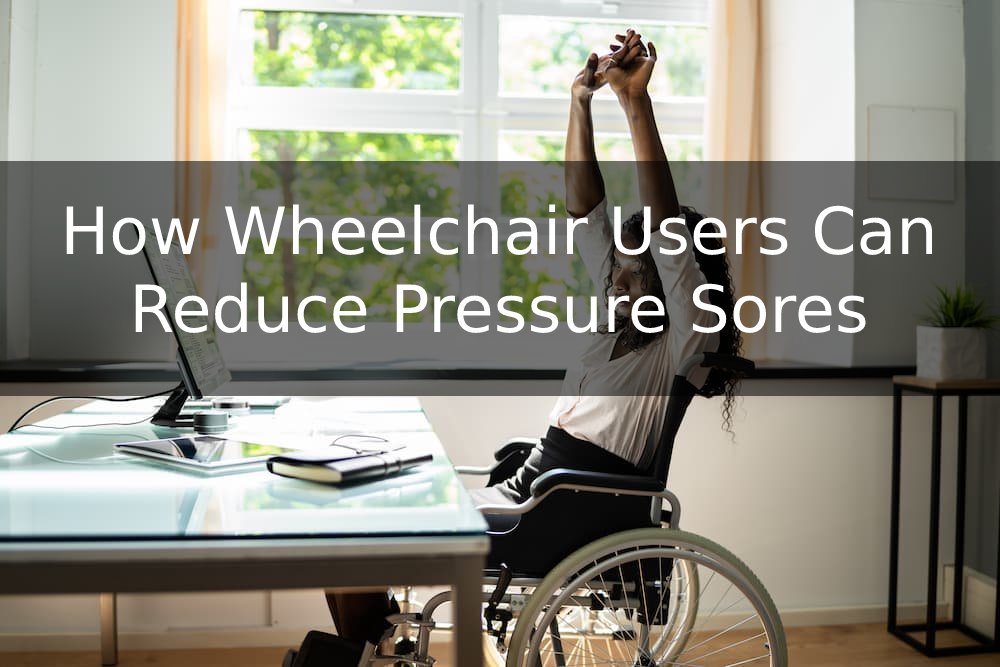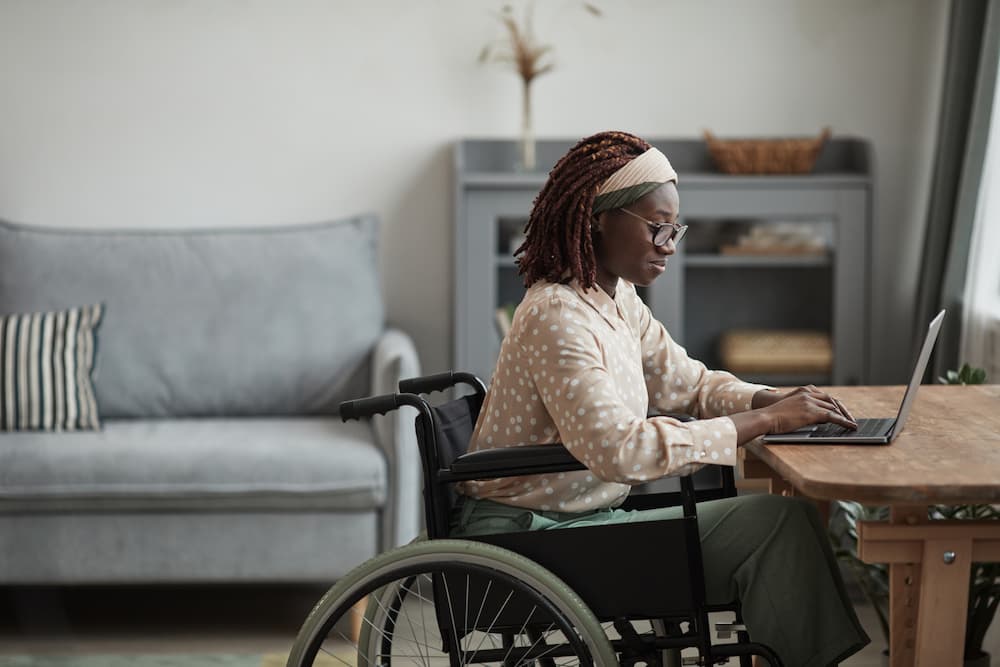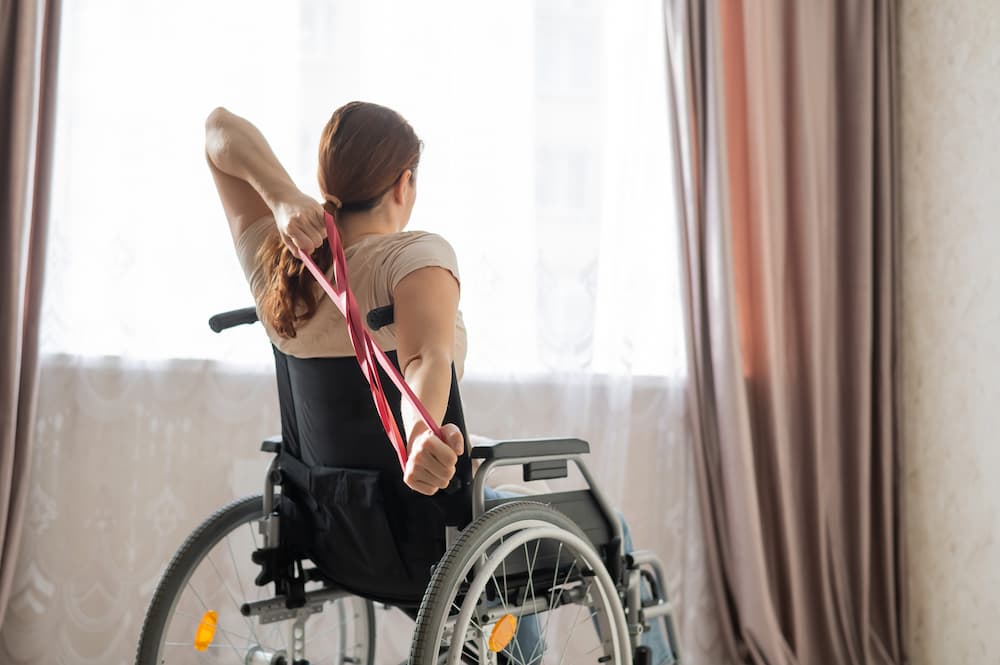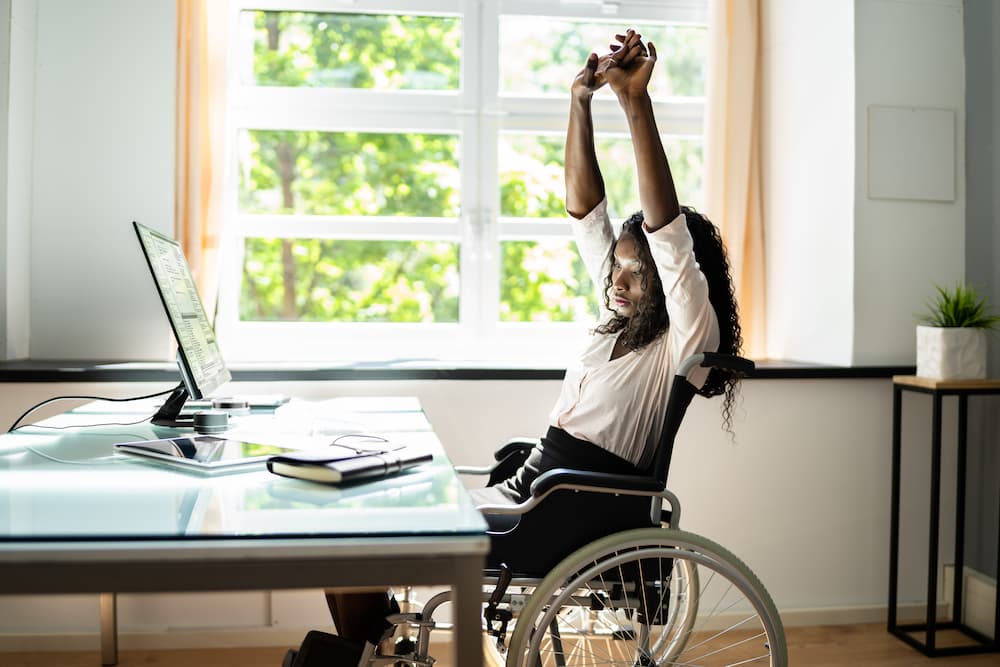Wheelchair users are prone to pressure sores, leading to severe complications such as infections when not managed properly.
While they can be frustrating, there’s a lot you can do to reduce pressure sores and improve your quality of life.
This post focuses on valuable tips to reduce pressure sores and other information you need to know about this problem.
What is a pressure sore?
A pressure sore, also known as a pressure ulcer or bedsore, is an injury to the skin and underlying tissue resulting from prolonged pressure.
Also known as decubitus ulcers, these injuries tend to develop on the skin that covers bony prominences, i.e., bony areas of the body such as ankles, heels, tailbone, and hips.
Although everyone can develop pressure sores, they mainly affect persons with medical conditions that limit mobility (1).
Stages of pressure sores
Not all pressure sores are the same. They are classified into four stages depending on the depth of the wound. These stages include:
- Stage 1: ulcers that haven’t broken through the skin
- Stage 2: ulcers breaking the top two layers of the skin
- Stage 3: besides two layers of the skin, ulcers also affect fatty tissue
- Stage 4: deep wounds that affect tendons, muscles, bones, and ligaments
Why does a wheelchair cause pressure sores?
Spending time in a wheelchair makes you more prone to forming pressure sores.
That happens because people in a wheelchair have limited mobility.
Lack of movement increases moisture and temperature around the body that are in close contact with the wheelchair surfaces. As a result, those specific areas are at a higher risk of developing bedsores among long-term wheelchair users.
Yet another reason wheelchair causes pressure sores is that immobility cuts off blood circulation to specific parts of the body, thereby damaging surrounding tissues.
In a wheelchair, around 8% of the body supports 50% of a person’s body weight (2).
This configuration makes a person in a wheelchair more susceptible to bedsores due to higher pressure on a smaller body area. Ischial tuberosities, or sit bones, do this job.
Men and women in wheelchairs tend to develop pressure sores on their buttocks, folds of their knees, backs of thighs, and lower back.
To sum up, a wheelchair causes pressure sores due to the following:
- External pressure applied to the specific body parts
- The friction that damages blood vessels right beneath the skin
- Moisture (feces, urine, sweat)
- Shearing separates the skin from the underlying tissue
How long does it take for pressure ulcers to form?
The actual timeframe may vary from one person to another.
Some studies show pressure sores in subdermal tissues under bony structures, after sustained loading, are likely to occur between the first 60 minutes and four to six hours (3).
Are pressure ulcers curable?
The pressure sores are treatable, but complete healing isn’t always possible. If detected quickly, stage 1 pressure ulcers are reversible. With adequate care, it’s possible to heal stage 2 and 3 pressure ulcers.
While stage 4 pressure ulcers can heal, they tend to be more stubborn (4).
How do you stop a wheelchair from causing sores?
Pressure ulcers are manageable.
We’re going to focus on different strategies and measures you may want to implement to reduce or stop pressure ulcers:
- Keep skin clean and dry – sores develop quickly on moist skin, which is why keeping the skin dry when in a wheelchair is incredibly important. A combination of damp skin and bacteria makes you more susceptible to pressure ulcers. Taking care of these problems can help stop them from developing or managing these skin injuries. Since bacteria increase the risk of infection and bedsores, patients in wheelchairs must bathe regularly with a mild soap.
- Use moisturizers and creams – these products will nourish and hydrate your skin, keep it healthy, and reduce irritations, thereby preventing or managing pressure ulcers.
- Reposition consistently – while repositioning can be tricky for wheelchair users, it is helpful for managing of preventing pressure sores. Depending on your immobility, you may want to implement a repositioning schedule or get out of the chair when possible. For example, you can have someone help you to make it happen. Why? Repositioning alleviates pressure. As you already know, consistent pressure causes these ulcers.
- Use softer seating – consider using a softer seating wheelchair cushion that creates more comfort and alleviates pressure simultaneously.
- Put your feet on the ground – doing so redistributes your weight and thereby helps relieve pressure.
- Try pressure mapping – some seat cushions feature pressure mapping technology that utilizes sensors to deliver continuous information on the affected areas. These cushions are helpful for healthcare professionals and persons in wheelchairs alike as they can help them make informed decisions to reduce pressure ulcers or stop them from appearing.
Besides the abovementioned tips, you may also want to try these methods.
Pressure relief exercises
Pressure relief exercises are among the most beneficial strategies for wheelchair users to prevent or manage these wounds and pressure injuries on the skin.
These exercises can improve blood flow and take weight off specific body parts by alleviating pressure.
Practical exercises to try include:
- Push-up – use wheels or armrests on your wheelchair to push up from your seat. Make sure to straighten your arms so that the elbows are locked fully. By doing so, your lower back and buttocks will be entirely out of the seat.
- Side-to-side leaning – while in a seating position, try to shift the body weight to the right side to lift the left side out of the seat. Then, adjust the body weight to the left side to lift the right side out of the seat. This exercise alleviates pressure from the lower back and buttocks like push-ups. For some people, it can be easier to perform this exercise than push-ups, but it’s helpful to give them both a try.
- Learn forward – the process is simple. Strive to learn as much as possible as if you’re trying to rest your chest on the knees. This exercise is beneficial for alleviating pressure from the coccyx (tailbone)
Strive to perform each exercise for 15 seconds for every 15 minutes of wheelchair use.
For instance, if you spend 30 minutes in a wheelchair, you may want to perform these exercises for 30 seconds.
Before performing these maneuvers, you may want to ensure the wheels are locked.
Consider using a heel pad
A heel pad is a specially created piece of material strapped around a person’s foot to reduce the risk of pressure ulcers.
Wheelchair users can benefit from heel pads because the lower parts of their legs are in constant contact with the wheelchair frame. This creates continuous pressure that could pave the way to wounds.
Benefits of heel pads for persons in wheelchairs include:
- Pain relief
- Prevention of pressure sores
- Affordable and widely available
- It’s easy to find a model suitable for the specific needs of wheelchair users
Get elbow protectors
Besides heel pads, you also need elbow protectors to provide comfort and support to your elbows, thereby preventing pressure ulcers.
Sitting in a wheelchair means the elbow is always in contact with the armrest. Eventually, wounds may appear due to constant pressure.
For that reason, you may consider getting elbow protectors with foam padding or other comfortable material.
Consider modifying wheelchair
Some people often find that their pressure ulcers still appear, despite exercise and other methods.
The potential cause of this problem could be inadequate seat dimensions in a wheelchair.
Feet don’t get much-needed support when the wheelchair seat depth is too high. In these cases, the thighs and buttocks bear the most weight, which increases the formation of pressure sores in these areas.
Consider modifying your wheelchair, so your seat is not too high, ensuring you have proper support and weight distribution.
If there is no chance to alter the wheelchair, i.e., no modification meets your needs, you may want to consider investing in a new wheelchair.
When it comes to the wheelchair, a tilt-in-space or full reclining wheelchair could be the most beneficial.
These wheelchairs shift pressure points so that specific body areas don’t bear a lot of weight. Even a subtle shift of a few degrees can significantly help reduce or prevent pressure sores.
FAQ
Do gel cushions prevent pressure sores?
Gel cushions can prevent pressure sores. One study showed that these cushions prevent both skin redness and the formation of pressure ulcers (5). This seat cushion provides support and reduces friction. Gel cushions help regulate body temperature and reduce the accumulation of moisture.
What type of cushion is best for pressure sores?
While memory foam and gel cushions are among the best materials for wheelchair cushions, the latter has a slight advantage. Gel cushions alleviate or prevent skin redness, provide support, and help distribute your weight more effectively. A combination of the two types of cushions is also great. Of course, this doesn’t mean you should ignore memory foam, which is durable. Sometimes it’s necessary to try different options before determining what works for you and meets your needs the most.
What cushion should be used for residents with impaired skin or at high risk for skin breakdown?
The best cushion for this purpose is an air cell cushion, which offers outstanding pressure redistribution and protection against wounds and pressure ulcers. In a nutshell, an air cushion is a type of fluid cushion that relies on compressed air as the lubrication medium. These cushions are beneficial for persons at high risk for skin breakdown and may aid in reducing the risk of developing pressure sores.
Conclusion
Pressure sores are a common occurrence in people in a wheelchair. While uncomfortable, these wounds are manageable with the proper approach. Focus on pressure relief exercises, keep skin dry and clean, use moisturizer, and invest in a high-quality cushion and wheelchair. Remember, taking care of pressure ulcers helps reduce the risk of infection. Preventing pressure sores in wheelchair users requires a lot of dedication, a person’s motivation, and assistance from their family and caregivers.
References
- https://www.ncbi.nlm.nih.gov/books/NBK553107/
- https://www.sciencedirect.com/science/article/abs/pii/S0161475499700205
- https://pubmed.ncbi.nlm.nih.gov/18927481/
- https://www.ncbi.nlm.nih.gov/books/NBK333152/
- https://www.ncbi.nlm.nih.gov/pmc/articles/PMC6428161/




